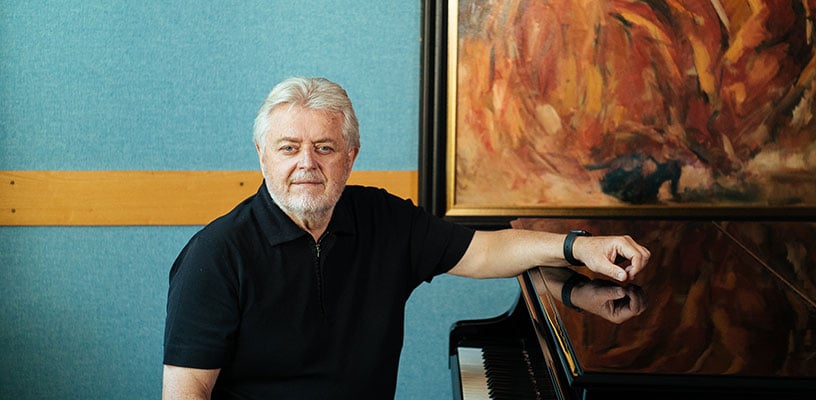Bill Whelan at 75: interview on Riverdance at 30

The 75th birthday of Bill Whelan is marked in May and the composer discusses his classic Riverdance, touring internationally in its 30th anniversary year. The double celebrations also see publication releases and concert performances, including the premiere of a new Concerto for Orchestra.
2025 not only brings your 75th birthday but also the 30th anniversary of Riverdance. What will be new as the show tours the USA, Canada and UK this year?
There are many new elements to the show. I have re-recorded the score as well as added a new number and re-introduced one we had taken out of the show previously. There have been major changes to the look of the show since we last played in America and the set and costumes have been radically re-imagined.
You’ve created a Riverdance Symphonic Suite. How does this weave together material from the various versions of the show?
There is nearly two hours of music in the show version of Riverdance, and the challenge for the Symphonic Suite was to condense the music down to a concert length. So I chose as many of the melodies as I could and then re-arranged them for symphony orchestra while replacing the traditional and folk instruments with conventional orchestral instruments. I tried to highlight the emotional impact of the pieces as well as giving the whole suite a dynamic shape that built to a dramatic finale.
> Watch highlights of Riverdance: A Symphonic Suite
Do you view your concert works, such as the suites and the flute concerto Linen and Lace, as a similar endeavour to your compositions for theatre and film, or do you take a different approach?
When writing for theatre or film, one has to be very conscious of the composer’s role as part of a number of theatrical elements which the audience will experience at the same time as the music. So I like to think of it more as a supportive role, when the music can heighten the emotional impact of the visual elements, while being careful not to overwhelm or distract from the artistic intention of the whole piece. In contrast, for concert music, the full focus is on the orchestra. It is principally an aural experience, where the composer relies on the dramatic and theatrical power of 80 musicians to deliver the intention of the piece.
Your choral work Sun and Moon and Stars is being published this year. How did you set Frank McGuinness’s poetry?
When I first read Frank McGuinness’s Sun and Moon and Stars, the idea came early to me to use the choir both to support the beauty of this lyric poem, while also using non-verbal textures and vocal sounds to accompany the soprano who sings the verses. I used rhythmic whispers throughout the verse sections, and then opened out to a full-voiced choral song for the chorus. I featured a solo cello at the beginning to create mood and to introduce the piece which I then reprised later on.
Your 75th year is bringing a new Concerto for Orchestra. Can you tell us about this commission and what your plans for the work are?
I’m composing this score for the National Symphony Orchestra of Ireland for premiere at the National Concert Hall in Dublin on 21 November 2025. It is early to speak with any certainty about a piece that is still in development, but my intention here is to highlight each section of the orchestra, where I would, for example, have a part of the suite just for woodwinds or brass, highlighting the ensemble and solo possibilities of each section, before joining back in with the full orchestra. It should really be a fun piece that allows the listener to pay focused attention to each instrument.
> Bill Whelan at Boosey & Hawkes
> Explore publications of Bill Whelan's music
> Visit the Riverdance website
> Visit Bill Whelan's website
> Further information on Work: Riverdance: A Symphonic Suite
Photo: Cathy Dunne
